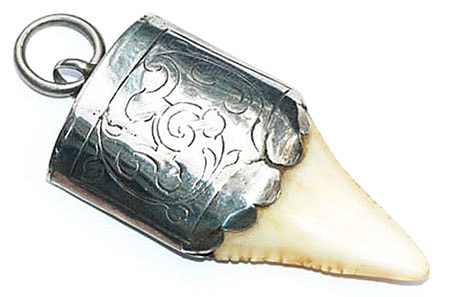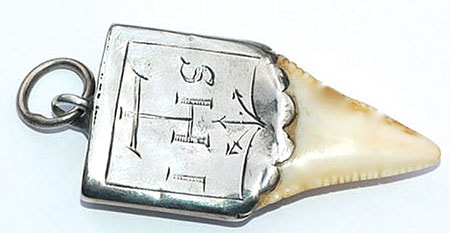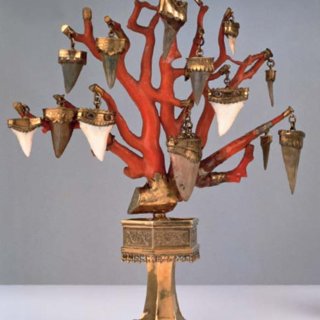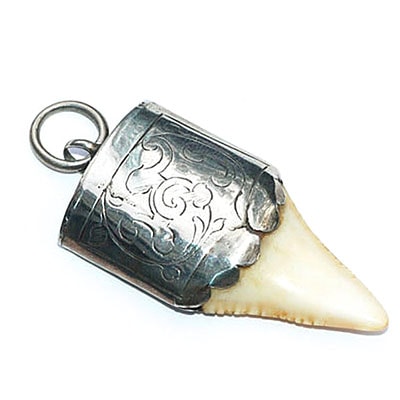Amuletic shark-tooth pendant
An early 18th century amuletic pendant of a fossilised shark-tooth set in an engraved silver mount. When fossilised shark teeth were first discovered embedded in rocks on the island of Malta, their origin was a mystery. The Roman naturalist and author Pliny the Elder (AD 23–79) suggested the curious triangular objects were meteorites that rained from the sky during lunar eclipses, whilst in the Middle Ages people believed they were the tongues of serpents which had been turned to stone by Saint Paul. The teeth were highly valued amulets. All the royal courts in Europe used shark-teeth as amulets to detect poisoned food or drink, as the most common way of eliminating one’s enemy was to poison his food or drink at a banquet. On this pendant the obverse of the silver mount is decoratively engraved and the reverse is engraved with the sacred monogram IHS, a cross above and three nails below it. The pendant is 1 and 2/3 inches long and 3/4 of an inch wide. There are similar examples in the British Museum and a number of European museums.
sold


 A kredenz of shark-teeth amulets in the Museum of Vienna
A kredenz of shark-teeth amulets in the Museum of Vienna

